|
Our survey
continues with Site 6, the first half of a two site outcrop further
down the trail. The two outcrops are separated by a red Schnebly
Hill Sandstone with no fossils of any type. The second outcrop
is smaller. And from what I have seen, far less fossiliferous!
Barely half a teaspoon of micro fossils was taken out of the
gallon survey sample. It appears the more east you go along both
outcrops, the less fossils you find. There were plenty of ground
up shell bits but nothing collectable to speak of. One nice find
was the partial juvenile Aviculopecten, and the partial trilobite
pygidium. The Bellerophontids made their appearance again as
well. A single macro fossil - an Straparollus sector was in the
last batch of acid fines and was a real treat.
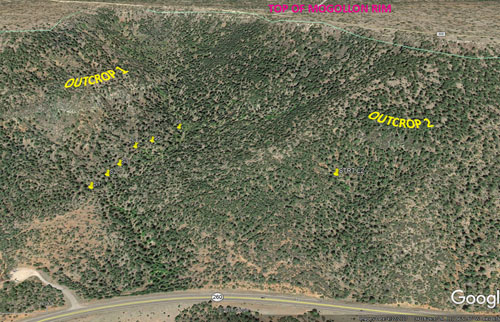 |
Location
of the second Outcrop 2. The marked site just below is the start
of Site 6. This goes for some 200 feet and becomes the second
half of the exposure - Site 7 which is yet to be explored in
detail. |
Through the
Microscope:
The
Fossil Photos.
A few words on
how these photos were taken. Using an Amscope stereo microscope,
one or two dozen shots of each subject were taken with the focus
shifted a bit between shots. The focus stacking software Picolay
was used to combine the images to obtain one frame of fully sharp
focus. Thousands of frames are treated in this manner and the
final images of the Fort Apache micro fossils you see here are
the results of a huge amount of work! Enjoy.
 |
Bellerophon
Gastropods
- 7x. A complete specimen at the top shows clearly both wings.
Two partials were also found, both had the dorsal ridge typical
of the genus. |
Brachiopods:
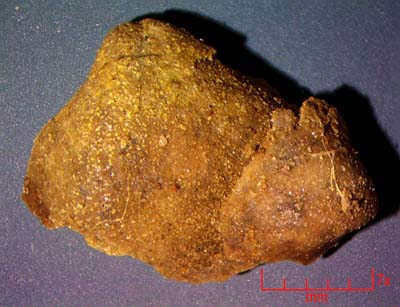 |
Pseudodielasma
sp. Two cemented
Brachiopods - 7x. Brachs are quite rare in the Fort Apache, here
are two found together. Their shells are weak compared to mollusks,
and they are usually ground up pretty bad. |
Bryozoans:
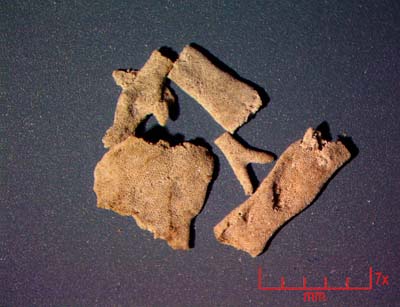 |
Typical
branching Bryozoans at 7x. Most sites have these as ever present
fauna, these however are quite flattened. Most of the gastropods
were very flat too, and this differs from the other sites. Stronger
burial compressive forces were at work here. |
 |
Close
up of one of the branching Bryozoans here at 40x. |
Chonetids
(Serpulid Worms):
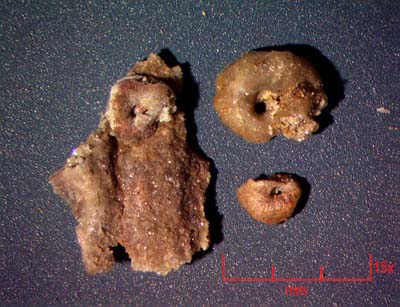 |
Chonetid
- AKA "Spirorbis" Annellid worm domiciles
at 15x. The one on the left is secured to a piece of shell. Loose
ones would have been attached to sea weed, which is long gone. |
Bivalves:
 |
Astartella
subquadrata.
The most common clam found in the Fort Apache! 7x. |
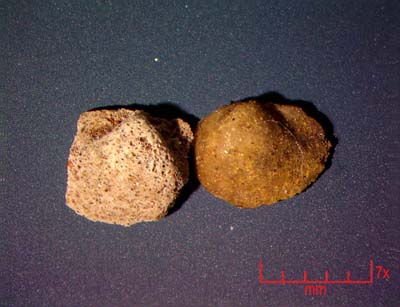 |
Genus
and species indet.
7x. These are new, they were not shown in Winters GSA 89 monograph.
The one on the left almost resembles an Aviculopectin, but the
one on the right is too incomplete to tell. |
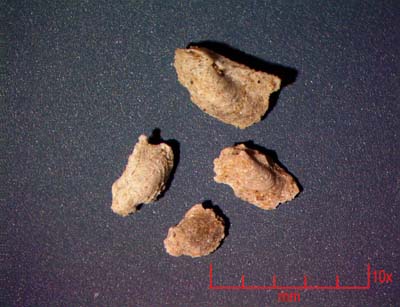 |
Paralellodon
anaklastum.
10x. The gorgeous "winged" clams have returned! The
top one is a real beauty. |
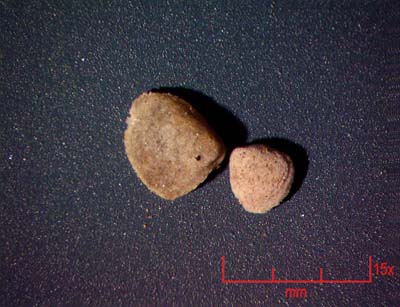 |
Palaeonuclula
levatiformis.
15x. Discovered and named by the famous Charles Walcott, this
is one of the smallest members of the bivalves found in the Fort
Apache. |
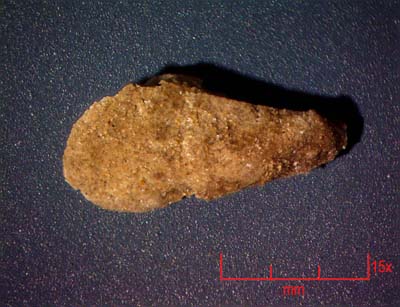 |
Genus
and species indet.
15x. I have not found this one before either. This elongated
pinna like clam was the only one found! |
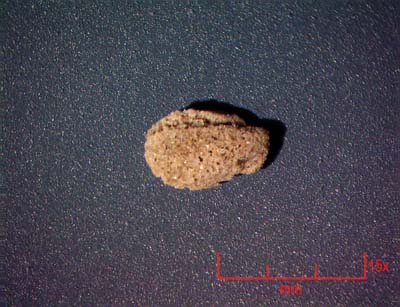 |
Possibly
Permophorus
sp. 15x. Preservation
here is bad, but the shape is similar. |
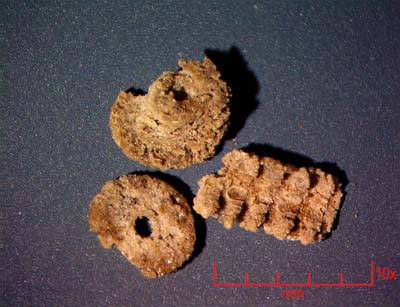 |
Crinoid
ossicles at 10x. There is really no way to identify the genus
on these, but they were rare finds because of the huge amount
of silt in the Fort Apache Sea - as evidenced by the 20% black
dirt that dissolved out of the limestones. Crinoids do not thrive
under such conditions. |
Gastropods:
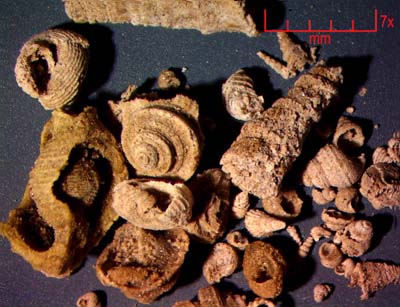 |
A
fair selection of gastropods were found here, but preservation
varied tremendously. 7x The quantity was quite small for such
a large sample. |
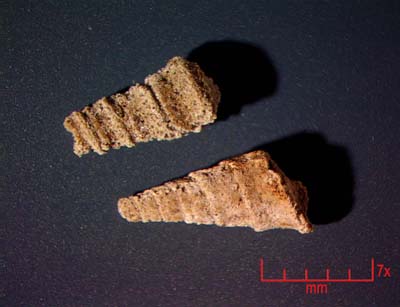 |
Poorly
preserved - Goniamsa
terebra. 7x.
These were the "Giants" in the collection. |
 |
Worthenia
arizonensis
- 10x. Cinnamon Rolls Gastropods. |
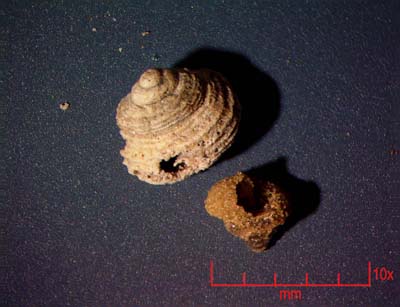 |
Worthenia
arizonensis
- 10x. Cinnamon Rolls Gastropods 2 |
 |
Incomplete
Apachella sp.
10x. I liked
this one because of the inner whorl details. |
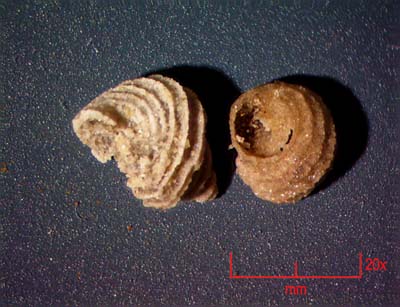 |
Apachella
sp. 20x. Deeply
ribbed and turban-like. |
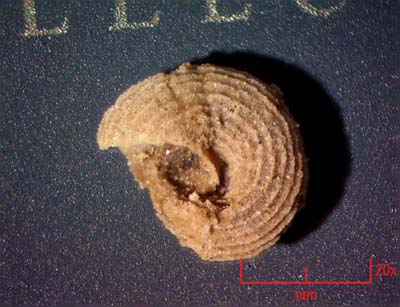 |
Apachella
sp. 20x. |
 |
Apachella
prodontia -
20x. Honey buns. A very common genus found in all deposits. |
 |
Apachella
translirata
- 20x. Rare and beautiful. |
 |
Juveniles
of several species indet. 20x. This is the most common type found
in the other localities. Here, only 3 were found. |
 |
Paleostylus
sp. - 20x.
Very nicely ornamentation is characteristic of only this gastropod. |
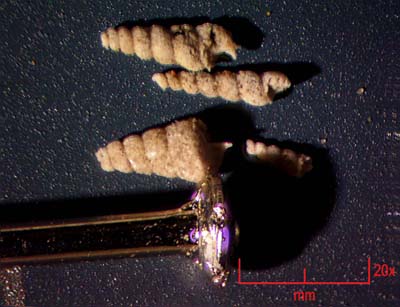 |
Turritella
shape - genus and species indet. - 20x with a pin head for scale.
Strangely enough, Winters never mentions these! |
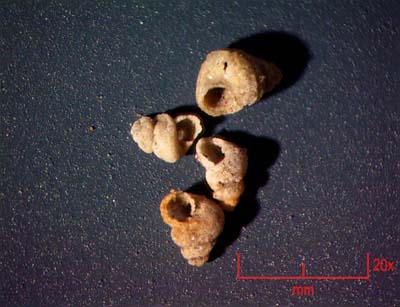 |
Genus
and species indet. -20x. Smooth snails. |
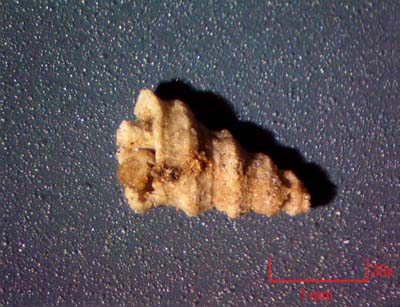 |
Goniasma
terebra - 30x. |
Straparollus
Gastropods:
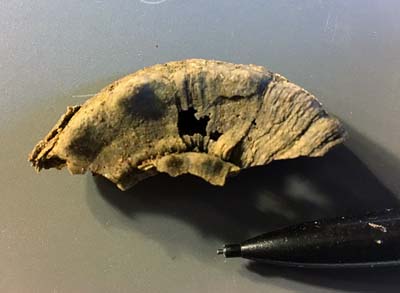 |
Straparollus
Kaibabensis.
This is the only macro fossil found in the gallon sample. But
its gorgeous! Typical double walled Straparollus sector, you
can see the ornamentation on the shell as four bumps along the
curve on the sides. Also not the fine ridgeing on one side showing
growth rings. |
Ostracods:
 |
Two
species of Ostracods were found, but ONLY the three here! - 30x. |
Scaphapods:
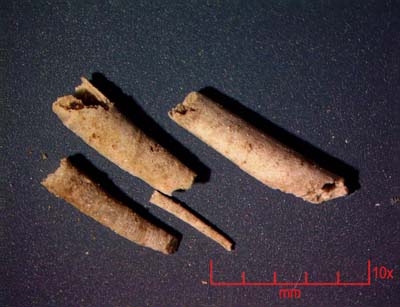 |
Plagioglypta
canna Scaphopods,
short sections of the tusk like shells - 10x |
Productid
Spines:
 |
Bellaclathrus
spinosus - Productid
spines - 7x. |
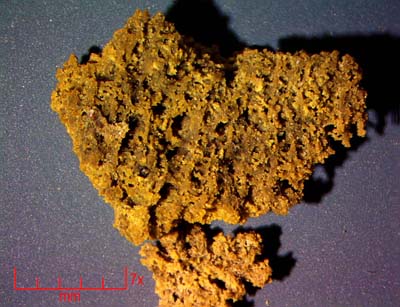 |
Sponges
- here are two pieces that were found at 7x. |
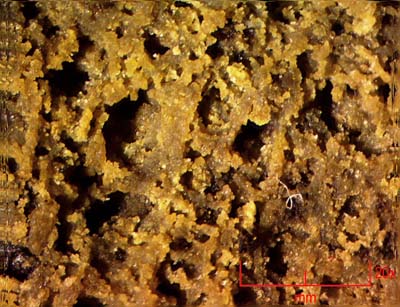 |
Close
up of one of the sponges at 20x. |
Trilobites:
 |
Phillipsia
sp. c.f. Phillipsia Perocidens. Trilobite parts, here is the complete set
found at 7x. |
Urchin:
 |
Echinocrinus
trudifer - Urchin
pieces - 7x. |
Quartz
and Mica Crystals:
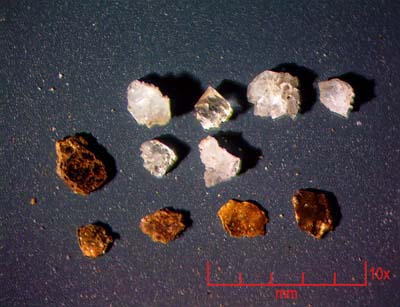 |
Besides
the reddish sand grains, we found quartz crystals and mica flakes.
- 10x |
 |
Close
up of two of the better quartz crystals at 40x. |
What
was found
As far as what
was found in a one gallon zip lock bag of rock, this list highlights
the best preserved specimens:
1. A very small amount of Urchin material that was very poorly preserved
2. Dozens of poorly persevered Branching / Encrusting Bryozoans
3. Three Serpulid Worm domiciles (Chonetes)
4. Half a dozen Scaphopods, no juveniles
5. Two species of Ostracods
6. Several dozen of both superbly - and poorly preserved Gastropods
7. two Sponges but no sponge roots
8. Half a dozen Trilobite bits including a partial pygidium
9. A dozen or so Bivalves - very generic but several with wings.
10. A few Straparollus gastropod parts with one large spoon size section.
11. And 2 partial Brachiopods (other than productids)
12. six productid spines
13, four crinoid ossicles
14. two Bellerophontid Gastropods
15. Quartz crystals
16. Mica flakes
17. One partial Aviculopecten juvenile
And here is what was NOT found that had been at other sites along the trail:
1. No sand grain covered with the metal coating
2. No solitary rugose corals
3. No Juvenile scaphopods
4. No Stromatoporoid pieces
5. No Nautiloids
|
